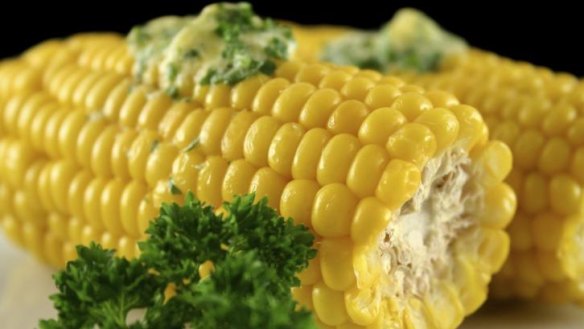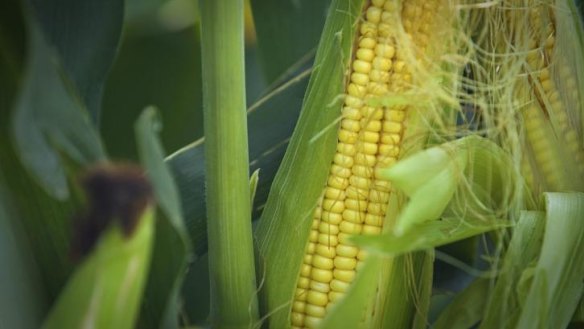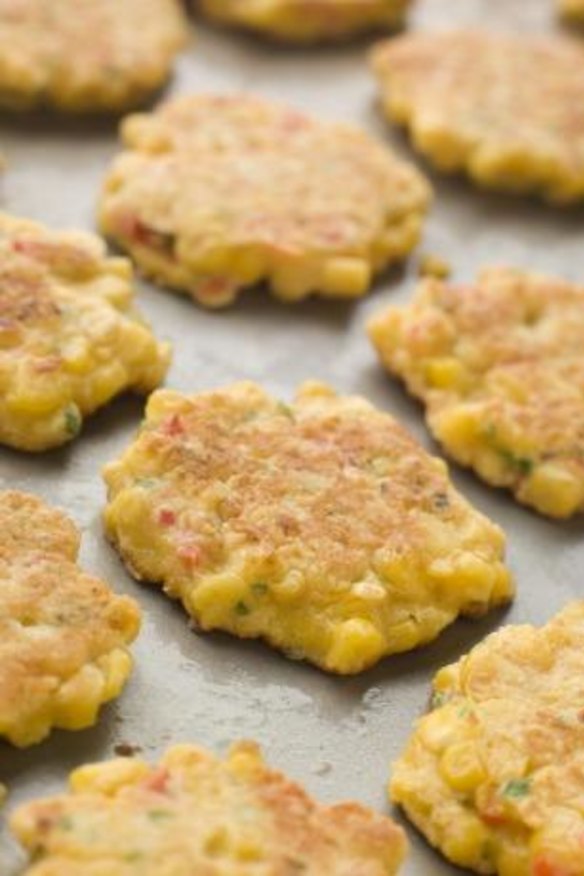How to grow sweetcorn in Canberra region

Plenty of sunshine, lots of water, good soil and plenty of space. These are the essentials for growing a good harvest of sweetcorn. If you are lacking in any one of them, then the odds are stacked against you.
It's worth the effort, as you can produce a wonderful home-grown crop that will provide nutritious meals from a vegetable that is rich in fibre, has many health-giving vitamins and minerals, and is a good source of antioxidants.
In the early years of settling on our little farm near Hall village, we discovered an old sheep camp. Sheep tend to gravitate to the high corner of a paddock when camping overnight. If they do so for some years, then you have a natural garden bed of beautifully enriched soil. The sweetcorn grew to two metres plus and the corn cobs were so delicious.

Now most folk do not have crowd of sheep to settle in their back paddock but, if you can secure some supplies of sheep manure from a shearing shed in the district, or old horse manure from some stables, or cow manure from a local dairy farm then you are well on your way to creating a very rich garden bed for corn. You could also look to mushroom compost or add in handfuls of organic poultry manure fertilisers which can be bought in pelletised form.
Corn requires more water a square metre than just about any other vegetable during its growing season. I feel comfortable about recommending the planting of a sweet corn crop this October because water supplies are in very good shape in southern NSW and the ACT. The new Cotter Dam is close to being full and our reservoir dam is full to overflowing. A big difference from three or four years ago.
One of the givens about our Australian environment is its wonderful sunshine ratios. When you talk to folk from Great Britain you begin to understand that we have some amazing benefits in living in this pristine country. Select a garden bed that is sunny and provide good drainage.

Space is a consideration when growing corn. Corn is wind pollinated with the male flowers erupting with pollen at the tops of the stalks. The loose clinging pollen grains need to float down and find the female ``silks" to complete pollination.
Try to set aside several square metres if you can to have good pollination. Three rows of corn in the block is a recommended minimum and four or more rows is much better. Plant seeds to a depth of 3cm and allow 30 - 40cm between each plant, along the row. Space the rows 40cms apart.
You can consider interplanting some rows of climbing beans with your corn crop, just as the Aztecs did centuries ago. Plant the beans two weeks after you plant the corn and allow a slightly wider spacing between the rows of corn. Good varieties are Blue Lake, Giant of Stuttgart and Purple King. The beans will provide valuable nitrogen to the corn and will use the stalks as a natural climbing ``frame".
Sweetcorn is shallow rooted so you will need to prevent the soil from drying out at surface levels. When the corn shoots emerge, mulch well with sugar cane mulch or pea straw. Feed regularly with a well diluted fish emulsion or seaweed foliar spray, as the plants grow.
The corn cobs are ready for harvesting when their silks have turned brown. You can also carefully peel back one leaf and press your thumbnail into one kernel. If milky juice comes out, the corn is ready to harvest. When you pick the corn cob off the plant, its carbohydrates are in the form of sugar. Delaying the eating will result in the sugar changing form into starch, so homegrown sweetcorn is by far the best product.
Hawaiian is early maturing and will produce good sized, sweet tasting cobs. It grows to 2.5 metres. Balinese is also faster growing than some varieties, reaching 2.5 metres in height. It will generally produce two large cobs per plant.
Anasazi is available to provide a very sweet multi-coloured variety. It has a long heritage and will produce two cobs a plant, with a growing period of three months.
Golden Bantam is one of the traditional rich yellow sweetcorn variety, growing to two metres. The plants are less vigorous than the tall varieties, so if space is a big consideration, try this sweet, flavoursome variety.
Corn fritters with spring vegetables
1 cup SR flour
½ cup full cream milk
3 free range eggs
4 large corn kernels, freshly stripped
1 red capsicum
1 red onion
½ cup coriander leaves
¼ cup spring garlic
butter
Sift the flour into a large bowl. Finely chop the capsicum, onion, coriander and spring garlic. Whisk the eggs and milk in a separate bowl then mix into the flour. Add in the corn kernels, capsicum, onion, coriander and garlic. Fold the ingredients together gently and season with salt and freshly ground pepper.
Grease a frying pan with butter and dollop heaped tablespoons of the mixture into the pan. Cook for two minutes then turn over and cook until golden brown.
This week in the garden
• Plant out some fast growing vegetables including open leaf lettuces, bush beans, radishes and little finger carrots.
• Plant basil, coriander and sage in pots. Plant parsley and dill directly into your herb garden. Buy healthy potted oregano and French tarragon plants at your garden centre to add to your kitchen garden.
• Plant zucchini, cucumber and pumpkin seeds into enriched, deep garden beds that are raised, providing both good drainage and a deep foundation for the roots, as they search for nutrients.
• Continue to plant potatoes and hill up when the shoots begin to emerge.
• Transplant tomato seedlings into larger pots and give them weekly doses of seasol sprays, to keep them growing strongly, while waiting for night temperatures to rise.
• Prune the leaves of citrus burnt by the late winter frosts. Where you find scale on citrus branches, simply rub off with your thumb or spray with soapy water or pest oil.
Owen Pidgeon runs the Loriendale Organic Orchard near Hall.
Restaurant reviews, news and the hottest openings served to your inbox.
Sign up